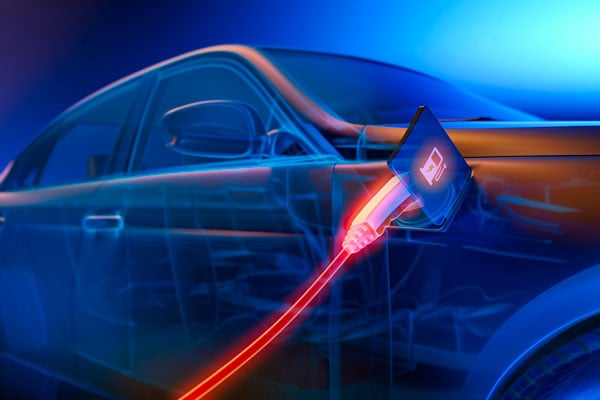The uptake of electric vehicles (EVs) is growing exponentially. So much so, many analysts now believe we’re reaching a tipping point where early adoption trends are giving way to mainstream demand.
Certainly in 2021, global sales of EVs and plug-in hybrids doubled from the previous year to 6.6 million – or 8.3% of all new cars – which represents huge growth from just 120,000 in 2012.
According to research by Bloomberg, individual countries cross the tipping point when EVs pass 5% of overall car sales.
“Before then, sales tend to be slow and unpredictable. Afterward, rapidly accelerating demand ensues,” reports a recent article on the Bloomberg UK site.
EVs on track for net zero goal
In the UK, pure electric cars accounted for 11.8% of vehicle sales in July. And when you add in plug-in hybrids, this increases to almost 40%.
Globally, S&P estimates EV sales will exceed 25% of the market by 2030, predicting 26 million will be sold that year.
The International Energy Agency says it believes this rapid growth will mean EV uptake is one of the few areas to be on track to deliver its net zero goal by 2050.
Norway provides example
For countries looking to accelerate EV uptake, Norway is often the example cited to show how it can be done.
With full electric EVs accounting for more than 65% of new cars sold in 2021, and plug-in hybrids 22%, Norway is the world leader in EV adoption.
The country’s success is attributed to a range of successful government policies.
For example, EVs are exempt from VAT and have lower annual vehicle tax. EV drivers don’t pay road tolls and qualify for reduced ferry tolls. Parking charges are also lower. Bus lanes are open to EV drivers. And there is significant public investment in charging infrastructure.
A need for more charging points
Charging infrastructure – or lack of – is often cited as a barrier for would-be EV owners.
As of 1 July 2022, there are now just over 32,000 public charging points across the UK. This represents a 31% increase since July 2021.
But it’s still not enough. The average number of charging points per 100,000 people is only 48.
This increases to 116 in London, the location with the largest charging provision. Scotland has the second highest number with 55 per 100,000.
Aiming for 10-fold increase
The government has set an ambition to have almost 10 times the number of public charging points – 300,000 – in operation by the end of 2030.
It is hoped this will be achieved by a combination of public-sector and private investment.
At nBS, powered by E.ON, we have a team dedicated to installing both private business and public charging points.
We work for commercial and public sector enterprises who are keen to support the UK’s growing number of EVs. For many of these organisations, facilitating the switch away from petrol and diesel vehicles forms a key part of their net zero strategy.
To find out more about how we play our part in helping the UK reach the EV tipping point, talk to your Client Lead or Account Manager, if an existing nBS customer, to discuss how we can support your business’s EV requirements.

/npm214%20Digital_H_UB121.jpg)

/npm214%20Digital_H_UB101.jpg)

/npm214%20Digital_H_UB15.jpg)

/npm214%20Digital_H_UB88.jpg)
/npm214%20Digital_H_UB102.jpg)


